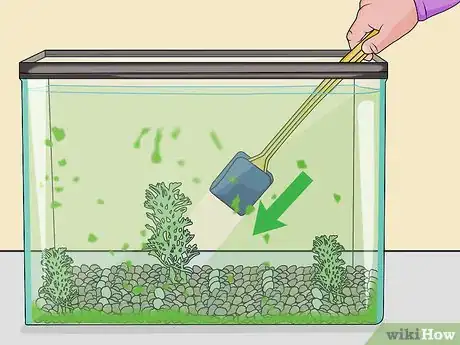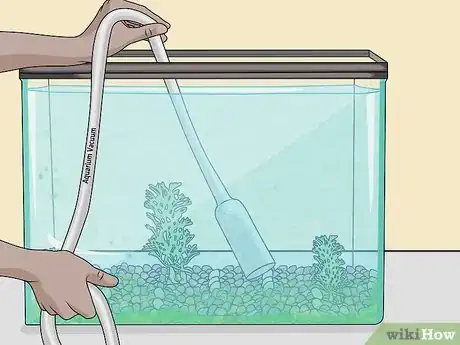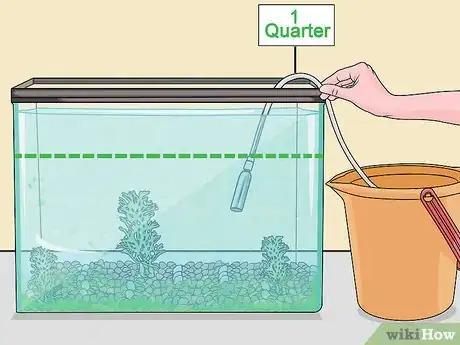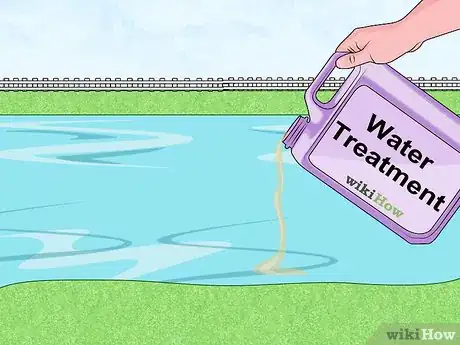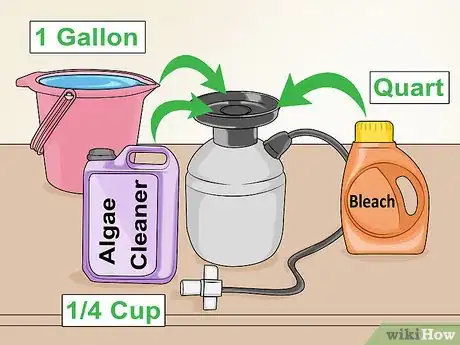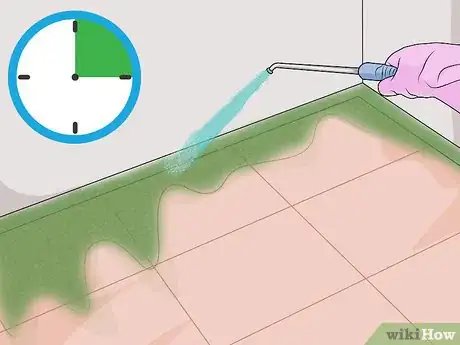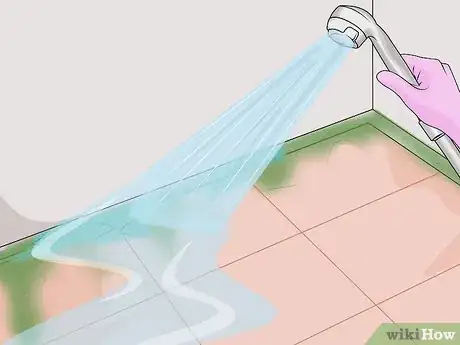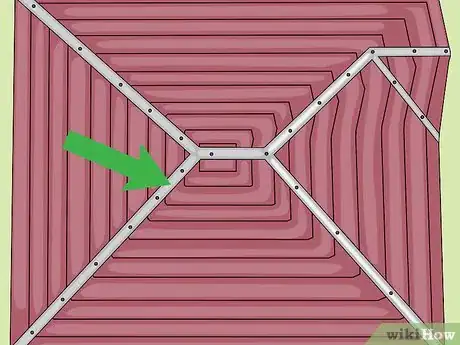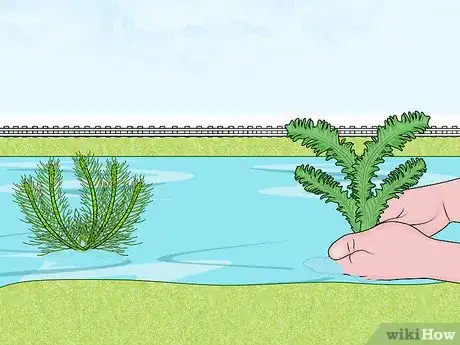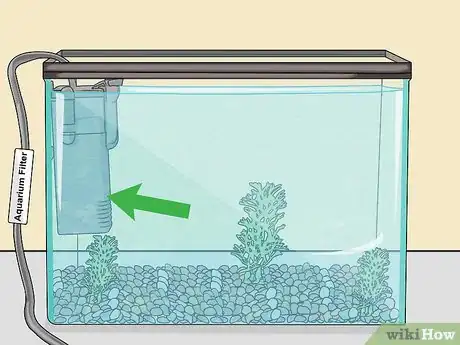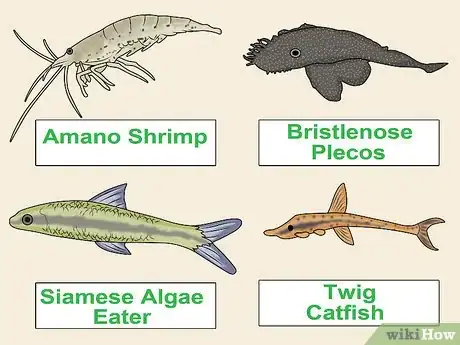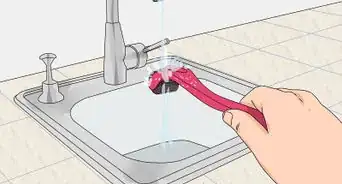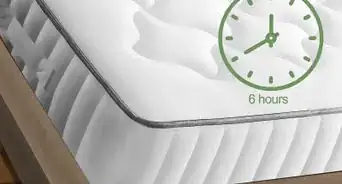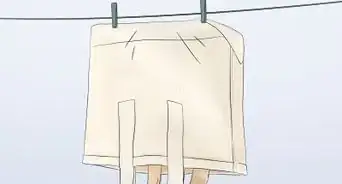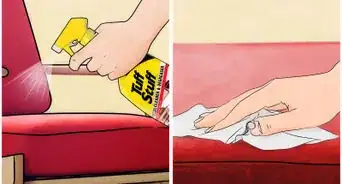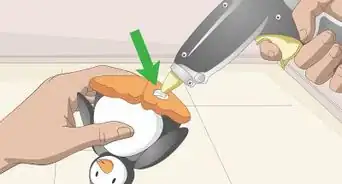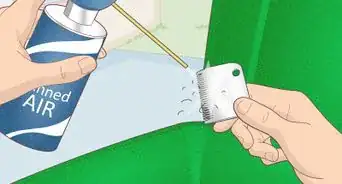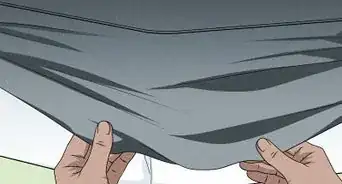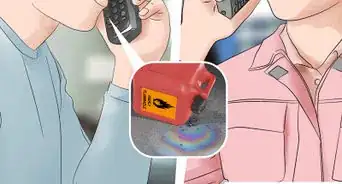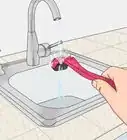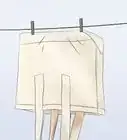This article was co-authored by Marshall Stephens. Marshall Stephens is an Aquarium Expert at Private Oceans Aquariums in West Palm Beach, Florida. Marshall has over 20 years of experience in the aquarium industry and focuses on captive-bred animals. They specialize in tropical and marine aquariums and are a contributor to the Loggerhead Marine life center in Jupiter Florida.
This article has been viewed 25,017 times.
Algae can build up in fish tanks or in areas of your home. To clean algae from a fish tank, scrub the algae off the sides and then siphon algae out of the water. Use a commercial cleaner and bleach to get algae off of your home.
Steps
Cleaning Algae from a Fish Tank or Pond
-
1Scrub down the side of the tank with an algae scrubber. Remove your fish from the tank before scrubbing down the sides with an algae scrubber. You can buy an algae scrubber online or at a local pet store. You should use this to remove algae from a fish tank rather than simply changing out the water. Use the scrubber to gently scrub the sides and bottom of the tank where you see algae.[1]
- Work from the top of the tank downward. This way, algae will sink to the bottom. This makes it easier to remove from the water.
- If you can't find an algae scrubber, any scrubbing device with a rough surface will work. In rare cases, you may need to use a razor blade to remove very stuck-on algae. If you are using a razor blade, hold it at a 45 degree angle to remove algae from your tank.
-
2Siphon off excess algae. Once algae has settled at the bottom of the tank, use your aquarium vacuum to siphon up the algae. Get as much algae as possible off the bottom of the tank. You do not want algae to start building up at the bottom of the tank after you removed it from the top of the tank.[2]Advertisement
-
3Do not replace more than a quarter of tank water. You should replace some of the water after removing algae, as there may be algae debris floating in your tank. However, only replace about a quarter of the tank each time you clean algae. Replacing any more than that can disrupt the bacteria in the tank, which can hurt your fish.[3]
-
4Use water treatments for larger bodies of water. When removing algae from a pond, manual cleaning may be too difficult. Instead of using a scrub brush, buy water treatments from a local greenhouse, department store, or online store. You pour a small amount of the water solution into your pond to effectively remove algae. Refer to the directions to know precisely how much to use, which depends on the size of your pond.[4]
- Most water treatments will need to be applied over the course of a few days to successfully remove algae.
Cleaning Algae from Your Home
-
1Put on gloves and goggles. As you'll be working with bleach to remove algae from your roof, sidewalk, or other areas of your home, safety is important. Put on thick, protective gloves, as well as a pair of safety goggles. These will keep you safe from bleach as you work.[5]
- If there are any plants near where you're removing algae, you should protect them as well. Cover plants in a plastic tarp to keep them safe.
-
2Mix bleach, algae cleaner, and water in a pump. You can buy algae cleaner online or at a local department store. It should be mixed with bleach and water in a cleaning pump to remove algae from your home. Mix a quart of bleach, a gallon of water, and 1/4 cup (60 milliliters) of a heavy duty algae cleaner in your cleaning pump.[6]
- If you don't have a cleaning pump, you can buy one online, borrow one from a friend, or rent one at a local hardware store. For small algae spots, you can simply place the solution in a spray bottle.
-
3Spray down the infected area. Spray the area where you see the algae thoroughly. You want to cover the infected area completely with your solution. Once the area is sprayed down, set a timer for 15 minutes to let the solution soak in. You do not need to scrub the solution. It will break down the algae on its own.[7]
-
4Rinse the area with a hose. Take a hose and use this to rinse off the solution. Make sure to rinse the solution off completely, especially if you're cleaning algae from somewhere off your roof. Leftover residue from your cleaner can cause damage. Once hose water runs clear, the algae should be gone.[8]
Preventing Algae
-
1Use copper or zinc strips on rooftops. Rooftops are particularly prone to algae buildup. Stop by a local hardware store and get zinc or copper strips. You can install these strips along each side of your roof. This should help prevent algae.[9]
- Install the strips along the side of the roof just below your roof's ridge.
-
2Add plants to ponds. If you have a pond that's prone to algae, adding more plant life can help keep algae away. You can purchase plants that fight algae at your local greenhouse and plant them in or around your pond.[10]
- Floating plants, like lilies and lotus, provide shade that blocks sunlight. This can slow down algae growth.
- Plants that you submerge in water can also help fight algae. Go for plants like anacharis, hornwort and parrot’s feather. You can safely plant one bunch of six to seven submerged plants per two square feet of your pond.
-
3Maintain an aquarium filter. If you do not already have an aquarium filter in your fish tank, buy one at a local pet store. Installing an aquarium filter will help keep algae and other dangerous and unwanted substances out of your tank.[11]
- The presence of algae usually comes down to how much nutrients are going in versus how much is going out. You have to find the right balance of how much food you're adding and how many water changes you are doing.
-
4Stock your tank with fish that eat algae. If algae is a major problem in your fish tank, add some fish that eat algae. Catfish tend to eat algae and you can also install coral at the bottom of your tank.[12]
- Be careful when adding new fish to an existing tank. Ask at the pet store if a particular type of fish is safe for your tank given its existing inhabitants.
- Snails and crabs are also a good ideal. Ask your local pet store for the best species available for you.
- Also, take into account how many animals are in the aquarium and the intensity and duration of the light it receives daily. Remember that algae is a plant and that it needs light and nutrients to live.
Expert Interview
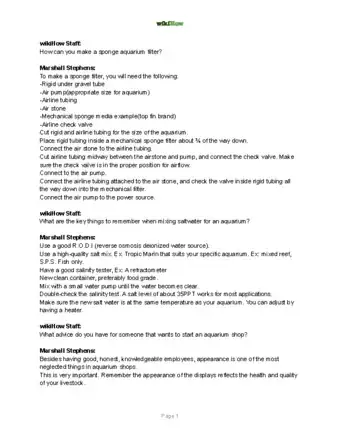
Thanks for reading our article! If you'd like to learn more about cleaning algae, check out our in-depth interview with Marshall Stephens.
References
- ↑ http://www.ratemyfishtank.com/blog/cleaning-algae-off-tank-glass-properly
- ↑ http://www.ratemyfishtank.com/blog/cleaning-algae-off-tank-glass-properly
- ↑ http://www.ratemyfishtank.com/blog/cleaning-algae-off-tank-glass-properly
- ↑ http://www.tetra-fish.com/Pond/pond-information-center/how-to-control-green-pond-algae-in-pond-water.aspx
- ↑ https://www.todayshomeowner.com/remove-prevent-algae-stains-asphalt-shingle/
- ↑ https://www.todayshomeowner.com/remove-prevent-algae-stains-asphalt-shingle/
- ↑ https://www.todayshomeowner.com/remove-prevent-algae-stains-asphalt-shingle/
- ↑ https://www.todayshomeowner.com/remove-prevent-algae-stains-asphalt-shingle/
- ↑ https://www.todayshomeowner.com/remove-prevent-algae-stains-asphalt-shingle/
